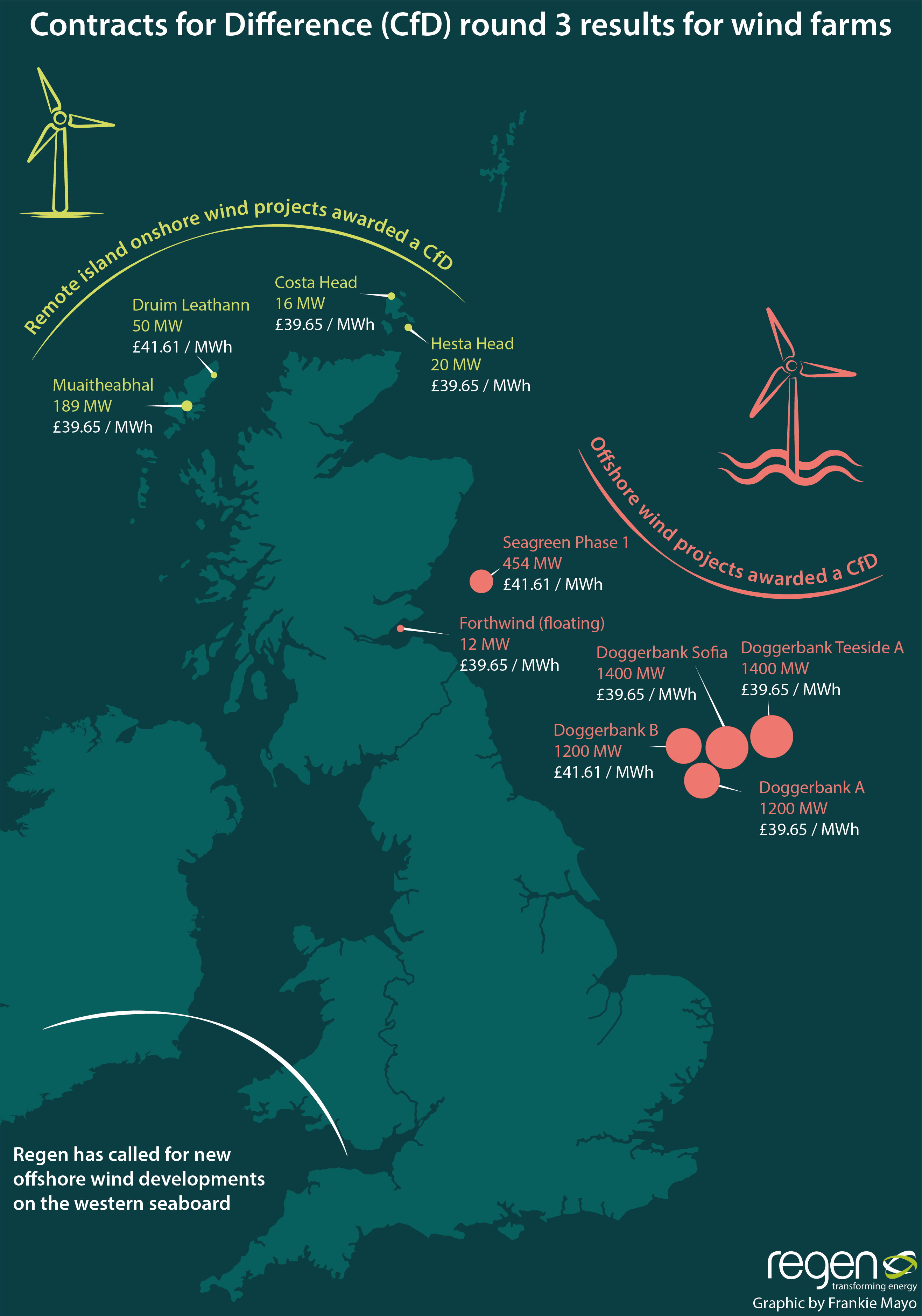 Data visualisation lead at Regen Frankie Mayo and offshore lead Kerry Hayes present our September graphic of the month, showing the onshore and offshore wind results from the latest CfD auction
Data visualisation lead at Regen Frankie Mayo and offshore lead Kerry Hayes present our September graphic of the month, showing the onshore and offshore wind results from the latest CfD auction
This month’s graphic shows the offshore wind projects which were awarded Contracts for Difference (CfD) in the latest auction round. Those that were successful in bidding were awarded a ‘strike price’ which effectively guarantees a price (£) for the sale of energy (MWh), and contracts are awarded to those who bid with the lowest strike price. The strike price is a guaranteed and indexed price for 15 years, designed to provide investors with the confidence to develop projects with high upfront costs and long lifetimes. All strike prices are published in 2012 prices.
Over the course of all previous CfD auctions, the winning strike prices have been getting dramatically lower. Successful bids this time were awarded at a low of £39.95 / MWh (for projects due to operate in 2023/24). For comparison, during CfD Round 1, strike prices were £114.39/MWh (2018/19 operating) and for Round 2, prices were as low as £57.50/MWh (for delivery year 2022/23).
All of the latest offshore wind projects were awarded in the southern north sea, which is where the majority of existing offshore wind farms are. These projects are likely to be the cheapest sites to develop due to being closer to shore, having access to existing port infrastructure and in relatively shallow water. Regen has been calling for the deployment of new projects on the western seaboard, in order to provide the UK with a balanced energy system which would spread both the risks and benefits around the UK. Facilitating offshore wind deployment in deeper waters, such as on the western seaboard, would also support innovation in new technologies such as floating offshore wind mooring.
The extraordinary reduction in the price of offshore wind demonstrates what happens when government works in partnership with the private sector on a long term plan, with a strategy to create high skilled jobs and deploy megawatts of renewable energy. In the context of the government net zero emissions target and the overall decarbonisation of the UK’s energy system, what is now needed is the same commitment, strategy and industrial partnership in the offshore wind sector to be applied to other areas of low carbon technology, where the UK could equally become world leaders.

